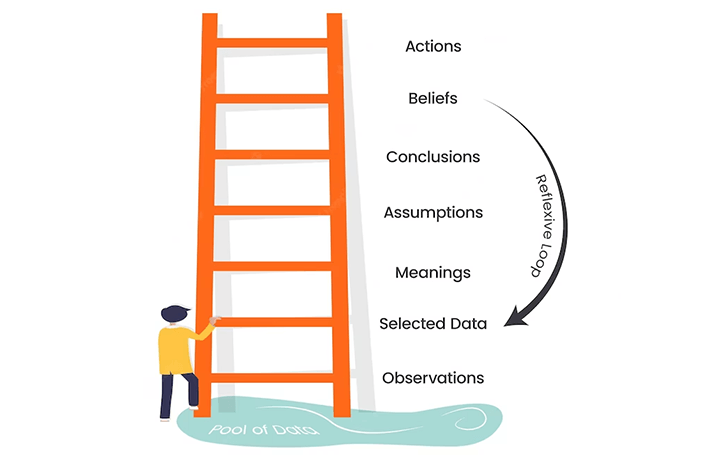
Click the button to start reading
What Is Quantitative Business Analysis, and How Can it Help My Business?
Every company owner wants to understand how their business is doing. And every potential investor wants to ensure they have as much information as possible about a company before they put their money into an organization. Running a company is a complicated and demanding process, and it’s not always easy to get a clear picture of the situation—especially when you’re in the middle of its affairs. Business analysis techniques provide us with a framework to ask relevant questions and understand just what’s going on within an organization.
In this blog post, we’ll take a closer look at the benefits of quantitative business analysis and the kinds of tools it brings to the table.
Let’s dive right in.

Qualitative vs. quantitative analysis
We can break business analysis into two types—qualitative and quantitative analysis. Both provide valuable insight, and using them together is the best way to evaluate a business successfully. So, before we get into the details of quantitative business analysis (QBA), let’s quickly compare the two approaches.
Qualitative analysis
Qualitative analysis involves examining aspects of the business and its market that cannot be quantified (expressed numerically). For example, we might use qualitative techniques to assess a business’s:
- Core business model — how does the company operate?
- Motivation — what is the company trying to achieve?
- Integrity and values — how does the company measure up ethically?
- Corporate governance — do the people involved live up to the company values?
- Target audience — what are the customers’ goals, aspirations, and fears?
Clearly, these are important factors in any business decision. They are also impossible to quantify. We can assess these aspects in different ways – many of which will be particular to us – but we can’t use them to crunch numbers and reach meaningful conclusions.
Quantitative analysis
Quantitative business analysis means using hard data to assess the health of a business and make predictions about its future. With QBA, we ask questions using specified parameters and variables and use numerical values to express the resulting data.
For example, as an investor assessing a potential investment, you might set minimum acceptable values for the following factors:
- Earnings per share.
- Return on equity.
- Return on capital.
- Free cashflow.
After analyzing the data, you would make a decision based on whether the business in question exceeds your minimum values or not.

What quantitative business analysis is used for
Whether you’re an investor looking to assess the performance of a prospective investment, or a business owner aiming to make your business more efficient or profitable, quantitative business analysis provides you with the tools you need to make decisions. QBA techniques are often used to examine relationships between variables, such as:
- Spending.
- Revenue.
- Profits.
- Market share.
We can use QBA to assess most aspects of business performance and help us understand hidden correlations and relationships. Some typical applications are:
- Forecasting.
- Reducing costs and increasing profit.
- Predicting customer behavior.
- Understanding brand penetration.

The role of statistics
Statistics often get a bad rap. You’re probably familiar with the phrase, “There are three kinds of lies: lies, damned lies, and statistics.” Although the origin of the phrase is uncertain (they’re often attributed to Mark Twain, but he attributed 19th-century British prime minister Benjamin Disraeli, and there’s no record of him using the phrase), many of us have taken the words to heart and are somewhat mistrustful of statistics.
While it’s true that statistics without proper context are meaningless and misleadingly presented statistics can be used for dubious purposes, statistical methods are the backbone of quantitative business analysis and give us powerful tools to aid our business decision-making.
Quantitative business analysis techniques
We’re not going to dig too deep into the technical side of QBA here, but it is advisable to get a basic understanding if you’re planning on combining quantitative business analysis and business decisions. There are a dizzying number of quantitative analysis methods that we can use in business analytics, but today we’ll stick to a few of the most commonly used techniques.
Break-even analysis
One of the more straightforward types of QBA, we use a break-even analysis to compare business spending with revenue over a specific time period to determine how much money the company has to bring in to cover its costs.
Regression analysis
We use regression analysis to assess the relationship between two or more variables. If there are two variables, we call it simple regression. Multiple regression involves three or more variables. An example would be identifying a correlation between how much we spend on materials to produce a product and the profit the product generates.
Time series analysis
With time series analysis, also known as trend analysis, we examine historical data to predict future performance. An example would be looking back over sales performance during past Christmases and using that data to make a forecast for the upcoming festive season. This method is best used for short-term forecasting.

How quantitative business analysis helps businesses
By using verifiable, high-quality data to assess business performance and make forecasts, we free ourselves from the biases and emotional reactions that can cloud our judgment. We also find a deeper understanding of the currents and trends that shape the market but aren’t necessarily obvious.
We can use QBA not only to assess business performance, but improve it. By implementing plans based on the result of our analyses, we can see improvements in areas like:
- Cost efficiency.
- Team performance.
- Sales forecasting.
- Brand recognition.
How to implement quantitative business analysis
While you can utilize QBA techniques yourself, unless you’re a statistician or data scientist, it’s going to be a challenge with a steep learning curve. If the business you want to analyze is small, or you only want to answer one or two simple questions, a DIY approach could work. There are plenty of courses available online to help you learn the skills. Beware though, because poorly designed or implemented analysis is at best a waste of time and could cause damage if you make business decisions based on inaccurate data.
For most people, employing a professional is the best way to get reliable, meaningful results. An experienced business analyst will work with you to determine what data you want to gather, the most appropriate methods to collect them, and which techniques should be used for the analysis.
Whichever route you decide to take, the process will go something like this:
- Define the questions — what exactly are you trying to learn about the business? It’s vital to be as precise as possible.
- Determine which analysis technique to use — this will depend on what you’re trying to get out of the analysis.
- Decide how you’re going to collect the data — for example, will you conduct an email campaign? Use a crowd-working platform? Physically ask people questions as they leave a store?
- Implement the data collection methods — get the infrastructure in place and conduct any necessary staff training.
- Gather the data — remember, the data needs to be high quality and relevant.
- Perform the analysis — apply your chosen technique to crunch the numbers.
- Use the findings to take action — once you have your results, do something with them. If you find yourself dismissing or ignoring the results, ask yourself why. Did you ask the wrong questions? Make mistakes with the data? Or are the results telling you something you’re reluctant to admit?

Things to remember
Before jumping into your analysis, make a plan. Lay out exactly what you want to achieve and how you’re going to achieve it. Here are a few things to bear in mind:
- Ask the right questions — it’s crucial to ensure that the data you’re gathering is relevant and usable.
- Use high-quality data — faulty data leads to false conclusions, so gather your data carefully.
- Keep it simple — don’t try to analyze too much at once – you’ll run the risk of confusing the results.
- Context is key — no business exists in a vacuum, so make sure to include competition and the broader market in your analyses.
- Bad analysis is worse than no analysis — if in doubt, hire a professional!
The bottom line
Quantitative business analysis allows us to dig deep into data to understand business performance, identify patterns that might not be immediately obvious, and make reliable forecasts about the future. We can use QBA techniques to inform our business decisions and improve performance within our organizations.
QBA can be used alongside other types of analysis to form a complete picture of a company’s health. Because the methods involved are complex, it’s a good idea to consult a professional business analyst before you get started. Understanding the process is valuable, though, so it’s worth getting to grips with the terms and various techniques involved.
















